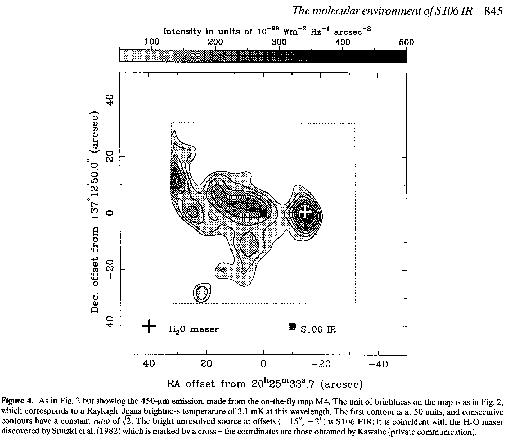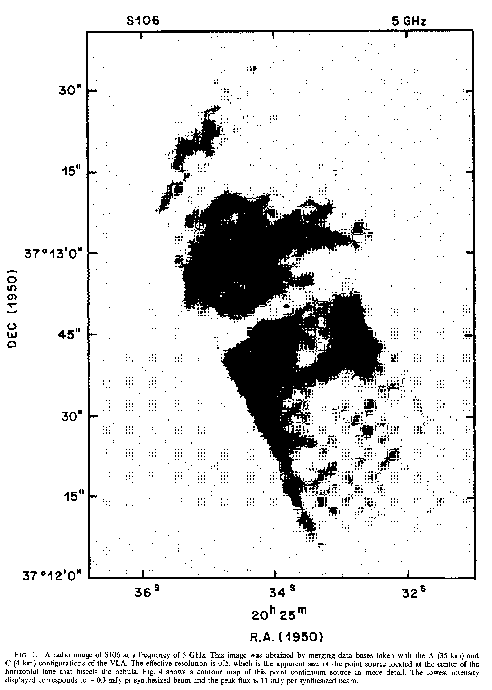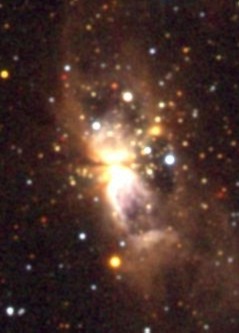
|
At submillimeter wavelengths, the dust which obscures objects at visible or
near infrared wavelengths glows proportionally to its mass. In this
submillimeter image from the JCMT, the invisible knot containing S106FIR
is prominent to the right of S106IR.
|


